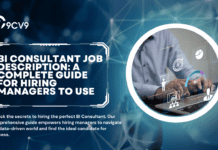Key Takeaways
- Discover the latest change management success rates, challenges, and employee engagement trends shaping organizational strategy in 2025.
- Learn how digital tools, AI, and data analytics are transforming the way businesses manage and sustain change.
- Gain actionable insights to enhance leadership involvement, communication strategies, and change readiness across your organization.
In today’s fast-paced digital economy, change is no longer a periodic disruption—it’s a constant reality for businesses across every industry.
From digital transformation initiatives and agile methodologies to workforce restructuring and organizational development, companies are increasingly embracing change as a strategic imperative.
As a result, change management has emerged as a critical discipline, guiding organizations through complex transitions with the goal of minimizing resistance, maximizing employee engagement, and ensuring business continuity.
To understand the true scope and impact of this evolving practice, it is essential to examine the latest data and trends shaping the field.
This blog presents the Top 100 Change Management Statistics, Data, and Trends in 2025, offering a comprehensive, data-driven snapshot of how organizations are navigating change in today’s dynamic environment.
Also, read our top guide on the Top 10 Best Change Management Software in 2025.

In 2025, the global business landscape is being redefined by several key forces—technological innovation, hybrid work models, economic uncertainty, and increasing demands for agility and resilience.
These drivers are compelling organizations to rethink their strategies, restructure their operations, and adopt new ways of working.
However, successful change doesn’t happen by chance. It requires a disciplined approach, informed by proven methodologies, robust planning, and, most importantly, empirical data. This is where change management statistics come into play—providing leaders, HR professionals, consultants, and project managers with valuable insights into success rates, employee reactions, common barriers, and effective change strategies.
Whether it’s adopting artificial intelligence tools, implementing enterprise-wide software systems, or reshaping organizational culture, the ability to manage change effectively can determine whether a company thrives or fails. The latest statistics from 2025 underscore the growing recognition of change management as a critical success factor. Studies show that companies with well-structured change management processes are significantly more likely to meet project objectives, adhere to timelines, and achieve expected ROI. Conversely, organizations that underestimate the complexity of change often face high failure rates, low morale, and declining productivity.
This extensive compilation of change management statistics covers a wide array of topics, including:
- Success rates of change initiatives and how they vary by industry, region, and organization size
- Employee sentiment and resistance to change, including psychological and behavioral responses
- Key success factors, such as leadership involvement, communication strategies, and training programs
- Trends in change management tools and software adoption in 2025
- The impact of remote and hybrid work on change processes and collaboration
- The growing role of data analytics and AI in predicting and managing change outcomes
- Benchmarks for change readiness, engagement, and sustainability
By exploring this in-depth, up-to-date collection of change management data and trends, readers will gain a holistic understanding of what’s working, what’s not, and where the discipline is headed in the future. Whether you’re a business leader planning a major transformation, a change consultant looking for the latest benchmarks, or an HR professional seeking to support employees through transition, these 100 statistics serve as a strategic resource for making informed decisions and designing high-impact change initiatives.
Stay ahead of the curve and equip your organization with the knowledge needed to manage change effectively in 2025. Dive into the data, uncover key insights, and align your strategies with the realities of a rapidly evolving business environment.
Before we venture further into this article, we would like to share who we are and what we do.
About 9cv9
9cv9 is a business tech startup based in Singapore and Asia, with a strong presence all over the world.
With over nine years of startup and business experience, and being highly involved in connecting with thousands of companies and startups, the 9cv9 team has listed some important learning points in this overview of the Top 100 Change Management Statistics, Data & Trends in 2025.
If your company needs recruitment and headhunting services to hire top-quality employees, you can use 9cv9 headhunting and recruitment services to hire top talents and candidates. Find out more here, or send over an email to [email protected].
Or just post 1 free job posting here at 9cv9 Hiring Portal in under 10 minutes.
Top 100 Change Management Statistics, Data & Trends in 2025
Market Size & Growth
- According to recent market research, the global change management software industry is projected to expand significantly and reach an estimated market value of approximately $3.12 billion by the year 2025, reflecting growing organizational demand for digital tools that facilitate change initiatives.
- The digital change transformation market, encompassing a broad range of technologies and services aimed at enabling organizational change, is forecasted to grow rapidly and achieve a staggering valuation of around $1,009.8 billion by 2025, underscoring the critical importance of digital transformation in contemporary business environments.
- Industry analysts have identified that the change management software market is experiencing robust growth, expanding at a compound annual growth rate (CAGR) of approximately 8.6% between 2020 and 2025, driven by increasing adoption of cloud-based solutions and AI integration.
Success & Failure Rates of Change Initiatives
- Studies indicate that only about 34% of major organizational change initiatives successfully meet their predefined objectives, highlighting the significant challenges companies face in effectively managing change.
- Research reveals that merely one-third of large-scale change initiatives fully achieve their intended goals, emphasizing the difficulty in sustaining momentum and engagement throughout the change process.
- Industry reports consistently show that between 60% and 70% of change initiatives fail, primarily due to factors such as employee resistance, poor communication, and inadequate leadership.
- Surveys suggest that approximately 50% of organizational change initiatives end in outright failure, meaning they do not deliver the expected benefits or outcomes.
- Data indicates that around 16% of change initiatives produce mixed results, where some objectives are met but others fall short, reflecting partial success.
- Only about 17% of executives express confidence that their organizations possess the necessary capabilities to execute transformational plans effectively, pointing to a leadership capability gap.
- Approximately 50% of leaders report being unable to confidently assess whether recent organizational changes have been successful, indicating a lack of robust measurement tools or processes.
- Research shows that nearly 31% of executives acknowledge their organizations do not have formalized processes in place to manage innovation effectively, which hampers change efforts.
- It is widely reported that 70% of change initiatives fail, a statistic that has remained consistent over time and highlights the persistent challenges in change management.
- Confirming earlier findings, only about one-third of major change initiatives fully meet their objectives, underscoring the need for improved strategies.
- Half of all organizational leaders admit they do not know whether recent changes have succeeded, revealing a significant blind spot in change evaluation.
- The failure rate for change management initiatives remains high at approximately 70%, emphasizing the critical need for better planning and execution.
- Over 70% of change initiatives fail specifically due to initial employee resistance, which remains one of the most significant barriers to successful change.
Employee Experience & Engagement
- Only about 25% of employees perceive change management as a significant strength among their organization’s senior leadership, suggesting a disconnect between leadership intent and employee experience.
- Surveys conducted in the UK reveal that nearly 29% of employees feel their companies did not clearly communicate the reasons for organizational change, leading to confusion and disengagement.
- Among employees experiencing change fatigue, approximately 32% report that work-related stress has negatively impacted their productivity, highlighting the human cost of poorly managed change.
- Since the onset of the COVID-19 pandemic, 78% of employees report having experienced more frequent and intense workplace changes than ever before, reflecting accelerated digital transformation and remote work adoption.
- Organizations with a healthy corporate culture are about 1.5 times more likely to report average annual revenue growth exceeding 15%, demonstrating the financial benefits of positive employee engagement during change.
- Introducing open-source principles and collaborative frameworks into change management practices has been shown to increase organizational success rates by approximately 24%, due to enhanced transparency and employee involvement.
- Employee engagement levels can improve by as much as 38% when organizations adopt open-source change management frameworks that encourage participation and feedback.
Change Management Program Effectiveness
- Companies that implement excellent change management programs are found to be 3.5 times more likely to outperform their industry peers in terms of meeting strategic objectives and financial performance.
- Approximately 88% of businesses with well-developed change management programs report that they meet or exceed their change initiative goals, reflecting the value of structured approaches.
- In contrast, only about 13% of businesses with poorly executed change management programs achieve their objectives, demonstrating the risks of inadequate planning.
- More than 58% of organizations have incorporated artificial intelligence technologies into their change management processes to enhance consistency, quality, and decision-making.
Trends & Technology Adoption
- Emerging technologies such as artificial intelligence, automation, and digital transformation tools are fundamentally reshaping the landscape of change management in 2025, enabling more agile and data-driven approaches.
- The use of real-time and historical data analytics has become a cornerstone of successful change management strategies, allowing organizations to monitor progress and adjust tactics dynamically.
- Leading change management software platforms now routinely include scenario testing and impact forecasting capabilities, which enable organizations to simulate potential outcomes and mitigate risks before implementation.
- Embedded training modules within change management platforms have become standard features, helping employees quickly adapt to new processes and technologies during transitions.
- Most modern change management tools integrate employee feedback loops directly into the platform, facilitating continuous communication and adjustment throughout the change lifecycle.
Metrics & Measurement
- Process compliance rating has emerged as one of the top metrics used by organizations to evaluate the effectiveness of change management initiatives, ensuring adherence to established protocols.
- Employee engagement and morale are increasingly tracked as key indicators of change success, as they directly impact productivity and retention during periods of transition.
- Measuring employee productivity and performance before, during, and after change initiatives provides critical insights into the real-world impact of organizational transformations.
- User adoption rates of new systems or processes are considered core metrics within software-driven change management, helping quantify how well changes are embraced.
- Change impact forecasting tools are widely used to predict potential risks and disruptions associated with proposed changes, enabling proactive mitigation strategies.
Leadership & Ownership
- A mere 17% of executives feel highly capable of successfully executing transformational plans, highlighting a significant leadership development need.
- Nearly 31% of executives acknowledge that their organizations lack formalized processes to manage innovation, which limits their ability to drive effective change.
- Approximately 50% of leaders admit they cannot confidently assess the success of recent organizational changes, indicating gaps in measurement and accountability.
- Only about 25% of employees perceive change management as a leadership strength within their organizations, suggesting opportunities for leadership improvement.
Communication & Resistance
- Nearly 29% of employees report that their organizations failed to clearly communicate the reasons for change, resulting in confusion and resistance.
- Employee resistance is cited as the cause of failure in approximately 70% of change initiatives, underscoring the need for effective engagement strategies.
- Since 2020, 78% of employees have experienced more frequent workplace changes, contributing to increased change fatigue and stress.
Continuous Change & Agility
- Change is no longer viewed as a one-time event but rather as a continuous process embedded in organizational culture to maintain agility and competitiveness.
- Organizations that foster continuous change readiness demonstrate greater adaptability and resilience in the face of evolving market conditions in 2025.
Digital Transformation
- Digital transformation remains a primary driver of change management initiatives in 2025, as companies seek to modernize operations and customer experiences.
- Technology-driven change is prioritized in organizational strategies, with investments focused on cloud computing, AI, and automation to accelerate transformation.
Sustainability & Corporate Social Responsibility
- Sustainability and corporate social responsibility (CSR) initiatives have become significant drivers of change management, prompting organizations to align business practices with environmental and social goals.
Change Management Tools & Features
- Predictive analytics integrated into change management software are increasingly used to assess employee resistance levels and optimize resource allocation for smoother transitions.
- AI-powered tools enable the creation of personalized change journeys tailored to individual employee needs, improving engagement and adoption rates.
- Pulse surveys and one-on-one meetings facilitated through software platforms are commonly used to gather real-time employee feedback during change initiatives.
- Impact heatmaps visualize the potential effects of proposed changes across departments and processes, helping leaders prioritize actions.
- On-demand tutorials embedded in change management tools reduce delays in adoption by providing employees with immediate access to training resources.
Market Segmentation & Deployment
- Change management software solutions are offered through both cloud-based and on-premises deployment models, allowing organizations to select options that best fit their security and scalability requirements.
Industry-Specific Insights
- The IT and telecommunications sectors lead in the adoption of change management software, driven by rapid technological advancements and competitive pressures.
- Demand for risk management and compliance analysis tools is a key factor influencing the purchase of change management software across various industries.
Change Management ROI & Business Outcomes
- Organizations with strong change management capabilities are approximately 3.5 times more likely to outperform competitors in achieving strategic objectives and financial results.
- Companies fostering a healthy corporate culture are about 1.5 times more likely to report average annual revenue growth exceeding 15%, demonstrating the economic impact of employee engagement.
- Adoption of open-source change management frameworks has been shown to increase organizational success rates by roughly 24% due to enhanced collaboration and transparency.
- Employee engagement levels can improve by as much as 38% when organizations implement open-source change management approaches that encourage participation.
Change Management Challenges
- Only about 17% of executives feel confident in their ability to execute transformational change effectively, highlighting a critical leadership gap.
- Approximately 50% of leaders report uncertainty regarding the success of recent organizational changes, reflecting challenges in measurement and accountability.
- Nearly 31% of executives acknowledge the absence of formal processes to manage innovation, which impedes effective change management.
- The failure rate of change initiatives remains high at around 70%, underscoring persistent obstacles in managing organizational transformation.
Employee Impact & Well-being
- Among employees experiencing change fatigue, approximately 32% report decreased productivity attributed to stress and mental health challenges related to ongoing change.
- Since 2020, 78% of employees have reported experiencing more frequent workplace changes, contributing to increased stress and adaptation challenges.
Adoption of AI in Change Management
- More than 58% of organizations have integrated artificial intelligence technologies into their change management processes to improve decision-making, consistency, and quality.
- AI-driven decision-making tools are among the top emerging trends in change management for 2025, enabling more personalized and data-informed strategies.
- Artificial intelligence facilitates personalized training programs and adaptive communication strategies, enhancing employee engagement during change.
Change Management Metrics
- Organizations track achievement metrics to evaluate whether change initiatives meet their defined goals and deliver expected benefits.
- Completion metrics are used to monitor the progress and timely execution of change management activities.
- Acceptability metrics gauge user acceptance and satisfaction with changes, providing insights into potential resistance.
- Change management dashboards provide real-time visualization of key performance indicators, enabling leaders to make informed decisions.
Change Management Communication
- Nearly 29% of employees cite poor communication as a significant barrier to successful change, emphasizing the need for transparent and consistent messaging.
- Employee feedback loops embedded in change management tools facilitate continuous dialogue and adjustment during change initiatives.
Change Management Fatigue
- Approximately 32% of employees report that stress associated with ongoing change efforts has negatively impacted their productivity and well-being.
Change Management Software Trends
- Scenario testing features in change management software allow organizations to simulate different change outcomes and prepare accordingly.
- Impact forecasting tools help teams assess risks and potential disruptions before implementing changes.
- User adoption metrics are commonly tracked within software platforms to measure how effectively employees embrace new processes.
- Embedded training modules within software reduce delays by providing immediate learning resources during change.
- Employee feedback is captured in real time through integrated surveys and communication tools.
Change Management and Digital Transformation
- Digital transformation initiatives continue to be a primary catalyst for organizational change in 2025.
- Technology-driven change is a strategic priority, with investments focused on cloud, AI, and automation.
Change Management and Sustainability
- Sustainability and environmental, social, and governance (ESG) factors are increasingly driving change management strategies.
Change Management and Employee Engagement
- Organizations with high employee engagement levels tend to achieve greater success in their change initiatives.
- Open-source change management frameworks have been shown to increase employee engagement by approximately 38%.
Change Management and Leadership
- Only about 17% of executives feel highly capable of executing transformational plans, indicating leadership development needs.
- Nearly 31% of executives report lacking formal innovation management processes.
- Approximately 50% of leaders cannot confidently assess the success of recent changes.
Change Management and Communication
- Nearly 29% of employees report poor communication during change, which contributes to resistance.
- Employee resistance is a factor in approximately 70% of change initiative failures.
Change Management and Continuous Improvement
- Change is increasingly recognized as a continuous process rather than a one-time event.
- Organizations with continuous change readiness demonstrate greater agility and resilience.
Change Management and Data Analytics
- Real-time and historical data analytics are critical components of successful change management.
- Predictive analytics help identify potential resistance and optimize resource allocation.
Change Management and Personalization
- AI-powered tools enable the creation of personalized change journeys tailored to individual employee needs.
- Personalized training and communication strategies improve adoption rates.
Change Management and Employee Well-being
- Managing employee stress, mental health, and workload is essential to prevent burnout during change initiatives.
Change Management and Feedback
- Real-time employee feedback captured through software platforms enables continuous improvement and adjustment during change.
Conclusion
As organizations navigate the unrelenting pace of transformation in 2025, the importance of structured and data-driven change management practices has never been more apparent. The insights revealed through these Top 100 Change Management Statistics, Data, and Trends serve not only as a reflection of the current landscape but also as a guiding framework for future strategic planning. From success rates and employee engagement levels to technological adoption and leadership involvement, these statistics provide a comprehensive overview of the critical elements that determine whether change efforts thrive or falter.
The data shows a clear correlation between effective change management and positive business outcomes—higher ROI, improved team alignment, reduced resistance, and greater adaptability. Organizations that prioritize proactive communication, continuous training, stakeholder engagement, and digital innovation consistently outperform their peers when managing transition and transformation initiatives. These findings are particularly vital as companies face ongoing disruptions, including rapid technological advancements, the rise of hybrid work environments, evolving customer expectations, and global economic uncertainty.
Moreover, the trends for 2025 highlight a growing reliance on digital tools, artificial intelligence, and predictive analytics to streamline change processes and drive better decision-making. Leaders are increasingly recognizing that change cannot be approached with outdated models or ad hoc solutions. Instead, a systematic, agile, and people-centric approach, grounded in real-world data, is the new benchmark for success. Change management is no longer a supportive function—it is a strategic capability that must be embedded into the DNA of every modern organization.
Equally significant is the emphasis on the human side of change. The statistics underscore how employee attitudes, psychological readiness, and cultural alignment play pivotal roles in the success or failure of any change initiative. Organizations that invest in emotional intelligence, inclusive leadership, and transparent communication see much higher levels of engagement and long-term adoption. The trends reveal that empowering people through involvement and support, rather than enforcing top-down directives, leads to more sustainable and scalable results.
For executives, project managers, HR professionals, and change practitioners, this collection of change management statistics acts as a valuable resource for benchmarking, planning, and implementing effective strategies. Whether you are driving digital transformation, introducing a new operating model, or shifting corporate culture, understanding the patterns behind successful change initiatives gives you a critical competitive edge.
In conclusion, the state of change management in 2025 is defined by complexity, speed, and opportunity. The organizations that succeed will be those that approach change not as a one-time project, but as a continuous, strategic journey—backed by data, driven by purpose, and supported by people. These 100 statistics illuminate the path forward, helping leaders make informed decisions, mitigate risks, and ultimately build agile organizations capable of thriving in a constantly evolving business world.
As the future of work continues to unfold, let these insights be your blueprint for designing impactful, resilient, and adaptive change strategies. Use this data not only to assess your current capabilities but to envision what’s possible when change is embraced with intention, insight, and innovation.
If you find this article useful, why not share it with your hiring manager and C-level suite friends and also leave a nice comment below?
We, at the 9cv9 Research Team, strive to bring the latest and most meaningful data, guides, and statistics to your doorstep.
To get access to top-quality guides, click over to 9cv9 Blog.
People Also Ask
What are the most important change management statistics in 2025?
Key statistics in 2025 highlight higher success rates for companies using structured change strategies, with digital tools boosting outcomes by over 60%.
Why is change management critical in 2025?
Change management is essential in 2025 due to constant technological shifts, hybrid work models, and the need for business agility.
What is the average success rate of change initiatives in 2025?
Studies show that organizations with effective change management processes have success rates exceeding 70% in 2025.
What are the main reasons change initiatives fail in 2025?
The most common reasons include poor communication, lack of leadership support, employee resistance, and inadequate planning.
How does employee resistance impact change in 2025?
Employee resistance continues to be a leading barrier, with over 50% of failed initiatives citing lack of engagement or buy-in.
What role does leadership play in successful change management in 2025?
Active and visible leadership increases change success rates by up to 65%, according to 2025 data.
How is AI influencing change management strategies in 2025?
AI is streamlining change planning, predicting resistance, and personalizing communication, improving overall outcomes significantly.
What tools are most used in change management in 2025?
Popular tools in 2025 include digital dashboards, AI analytics platforms, project management software, and feedback tracking systems.
How has hybrid work impacted change management in 2025?
Hybrid work has made remote communication, digital collaboration tools, and flexible change strategies essential for success.
What industries are leading in change management effectiveness in 2025?
Technology, finance, and healthcare industries are showing the highest effectiveness due to strong investment in change strategies.
How does communication affect change outcomes in 2025?
Clear, consistent, and multi-channel communication increases the likelihood of successful change by over 50% in 2025.
What percentage of organizations use formal change management frameworks in 2025?
Around 68% of organizations use formal frameworks like ADKAR or Kotter’s Model to manage change effectively.
What is the impact of digital transformation on change management in 2025?
Digital transformation is a major change driver, with 75% of initiatives in 2025 involving new technologies or automation.
What is the ROI of effective change management in 2025?
Organizations with strong change capabilities report up to 6x higher ROI on strategic projects compared to those without.
How do employees perceive change initiatives in 2025?
Employee surveys show that 60% prefer to be involved early in the change process to feel more invested and less resistant.
What are the emerging trends in change management in 2025?
Top trends include AI integration, agile methodologies, real-time data tracking, and greater focus on employee experience.
How is change fatigue affecting organizations in 2025?
Change fatigue is rising, with 45% of employees reporting burnout due to constant organizational shifts and lack of clarity.
What skills are essential for change managers in 2025?
Top skills include emotional intelligence, data literacy, communication, agility, and proficiency with digital tools.
How does training support change management success in 2025?
Ongoing training improves adoption rates by over 55%, making it a key factor in sustained behavior change and performance.
What is the role of data in change management in 2025?
Data enables real-time tracking of adoption, resistance, and engagement, helping leaders adapt strategies more effectively.
How do companies measure change success in 2025?
Common metrics include employee adoption rates, project ROI, time to implement, and post-change performance benchmarks.
How long do most change initiatives take in 2025?
Most change initiatives in 2025 take between 6 to 18 months, depending on project complexity and organizational size.
What are the benefits of agile change management in 2025?
Agile methods allow faster adaptation, better feedback integration, and more flexibility during rapid organizational shifts.
How are remote teams managed during change in 2025?
Remote teams rely on digital collaboration platforms, regular check-ins, and transparent communication to stay aligned.
What percentage of organizations invest in change management training in 2025?
Over 70% of organizations provide formal change management training to leaders and teams to improve success rates.
How do generational differences impact change in 2025?
Younger employees adapt faster to change, while older generations often require more communication and support.
What technologies support change management in 2025?
Technologies include AI analytics, cloud-based communication tools, learning management systems, and feedback apps.
How important is cultural alignment in change initiatives in 2025?
Cultural alignment is critical, with misalignment leading to up to 40% of change initiatives failing to meet objectives.
What is the future outlook for change management beyond 2025?
Change management will continue evolving, with AI, predictive data, and human-centric approaches shaping future practices.
How do organizations maintain change momentum in 2025?
Sustaining momentum requires visible leadership, frequent updates, recognition programs, and continuous performance tracking.
Sources
- Prosci
(Leading research and advisory firm specializing in change management best practices and benchmarking studies) - Gartner, Inc.
(Global research and advisory company providing market insights on IT, software, and change management trends) - McKinsey & Company
(Management consulting firm publishing research on organizational change, digital transformation, and leadership effectiveness) - Forrester Research
(Market research company providing insights on technology adoption, customer experience, and change management software) - IDC (International Data Corporation)
(Provider of market intelligence and advisory services for IT, telecommunications, and consumer technology markets) - Harvard Business Review (HBR)
(Authoritative source for management research, including studies on change management success factors and leadership) - Deloitte Insights
(Consulting firm offering research on organizational change, digital transformation, and workforce trends) - PwC (PricewaterhouseCoopers)
(Professional services network publishing reports on change management, digital adoption, and corporate culture) - KPMG
(Global network of professional firms providing insights on change management and risk mitigation) - Accenture
(Consulting firm specializing in technology-driven change and digital transformation strategies) - Bain & Company
(Management consulting firm with research on organizational change, leadership, and performance improvement) - Capgemini Research Institute
(Research arm focusing on digital transformation, AI adoption, and change management trends) - Gartner Magic Quadrant Reports
(Industry-standard evaluations of change management and digital adoption platform vendors) - TechRepublic
(Technology news and analysis site featuring data on software adoption and change management tools) - Statista
(Statistics portal aggregating data from various verified sources on change management market size and adoption) - SHRM (Society for Human Resource Management)
(Professional association providing research on employee engagement, communication, and change fatigue) - MIT Sloan Management Review
(Academic journal publishing research on leadership, innovation, and organizational change) - The Change Management Institute (CMI)
(Professional body offering research and certification in change management practices) - World Economic Forum
(International organization providing insights on workforce transformation and digital change) - IBM Institute for Business Value
(Research division delivering studies on AI, digital transformation, and change management)































![Writing A Good CV [6 Tips To Improve Your CV] 6 Tips To Improve Your CV](https://blog.9cv9.com/wp-content/uploads/2020/06/2020-06-02-2-100x70.png)


